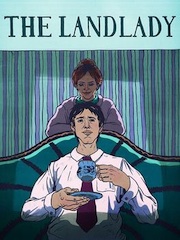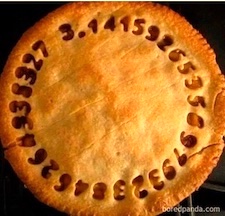What We Can Do When Gifted Students Struggle
Sharon Ratliff is the Gifted and Talented Facilitator at Tays Junior High in Katy, Texas.
 By Sharon D. Ratliff
By Sharon D. Ratliff
Elementary schools are like small towns with a few alternate routes. Teachers have a great deal of influence about the direction gifted kids take to best reach their academic destinations.
In middle school, however, some gifted and talented students find themselves lost in a traffic maze without sufficient navigational support. They might include:
- A student with above average IQ yet failing math.
- A bright student who has had straight A’s until 7th-grade science.
- A gifted student who has begun calculating the lowest grade they can earn on a test and still pass the grading period.
Educators who work specifically with the gifted and talented deal with these scenarios each year. Their techniques and conversational strategies offer some ways to help gifted students stay on the road that leads to academic success. Let’s look at several.
Actions teachers can take
► Assessment options. Gifted students respond more positively when they can choose their routes to demonstrate their learning. Yes, have structure, but give students some autonomy (let them take some backroads) to show what they know.
► Opportunities to talk. Gifted students often thrive when they are allowed to share their insights. Since teachers have time constraints in class, consider using an asynchronous discussion board (available in most learning management systems) where teacher and student can message each other as time allows.
► Accelerated learning. Another option is to offer compact curriculum opportunities with certain units. Curriculum compacting allows students to steer away from material they have already mastered and challenges them to apply or grow their knowledge about a topic in an accelerated manner.
► Make a human connection. Connect learning with a story or use a human connection. Using the transformative power of a story steers students towards curiosity about the subject matter.

► Use stories in science and history. A narrative could also be used in science. Some GT students may find the laws of motion dull, but a short vignette about Sir Isaac Newton’s unusual interests before exploring the laws of motion activates the mind. For history, encourage connectivity with people, places, and events. Challenge the gifted student to think of an event in history from another historical character’s viewpoint. What would Thomas Jefferson notice about the Alamo? Would he have been a strong leader in this circumstance? Why or Why not?
► Allow GT students to interact with each other. Provide specific guidelines for this interaction, but have students talk about what they are reading or writing. (Reading responses are excellent in promoting thinking and discussion.) Another way to encourage discourse is with a classroom transformation.
In Western culture we promote conversation through dinner parties. This template shows some questions that could be set up for a “dinner party guide” when examining fiction. Flip (formerly Flipgrid) is another tool to use for student discourse (teacher-facilitated). The application allows students to create video responses to open-ended discussion questions and for students in the same class to respond to each other through video.
► Connect learning to humor. School can be stressful, and many of our gifted students internalize this stress because of the expectations they place on themselves. To diffuse stress, allow students to use humor with content when appropriate.

► Remember Maslow’s Hierarchy of Needs. Several years ago, I had a gifted student, Lamar, falling asleep in class. In talking with him, I discovered Lamar had been sleeping in his mother’s car for the past week. Subsequently, I worked with our counselor to find temporary housing for Lamar and his mother. Lamar turned around his grades and qualified to take Algebra a year early. Maslow’s hierarchy of needs applies to all; it is a myth to assume gifted students will muddle through learning regardless of outside circumstances.
Conversation strategies
Over this school year, I have met with several struggling gifted students, and, as a result, have developed some strategies when chatting with them about gaps between their performance and their potential. A word of caution – before trying these strategies, it is vital to have established relationships with students.
► The Dr. Phil approach. Recently, I noticed a student failing advanced 7th-grade math. He had scored a 50 on the last test. This is the conversation that ensued:
Me: I wanted to stop by and check on you. What class are you enjoying?
Student: Well, I guess PE is going great. I made the basketball team!
Me: Wonderful! I’m sure you prepared for those tryouts! Let’s chat a little about math. I noticed your last test score was low. How did you prepare for that test?
Student: I looked over the review and thought I understood all of the problems. But when I started working on the test, the problems looked totally different.
Me: How did your technique work for you? (pause) Does it help to just look at the review and think about math problems?
By using this approach, students have an opportunity to reflect and ascertain for themselves that they need a different approach to preparing for a test. (This is a great time to introduce some study skills.)
► The shoot straight approach. Some gifted students embrace honesty. They understand when you state, “There are some required classes along this education route, yet the material doesn’t appeal to the map in your brain or fit in with your interests.”

I connect this painting example and relate that succeeding in preparation classes keeps the door open to future possibilities. You can also open a straightforward conversation by using this stem: “I see you are struggling with _______________. Tell me about the challenges you’re facing.” As a listener, you might be surprised at what “challenges” students decide to discuss, and a student’s response can help you steer the student in the right direction.
► Don some virtual reality lenses. Specifically, I ask students to imagine some possibilities later in life through a virtual lens view of their future. The conversation includes questions like:
- “What is your trek later in life going to be like if you practice doing as little as possible now?”
- “Would you like to write code for a living or pursue artistic avenues (fill in the blank with any student interest)? If so, what skills do you think you need to pursue this career?” (If students don’t know, take a few quick minutes to search the internet).
- “By failing a high school credit class, are you closing the door to a future landscape?”
Using specific questions to have students think of how current choices impact future outcomes is a tool to help them stay on course (and not find themselves stranded in a cul-de-sac).
Sharon D. Ratliff (@sharondratliff) recently shifted from 7th grade ELA teacher to middle school gifted and talented facilitator in Katy, Texas. Before stepping into the mysterious land of middle school, Sharon taught upper elementary in Texas, Florida, and with the Department of Defense.
Over the past 20 years, Sharon has mentored young teachers, hoping to pass along a love for educating young minds. She enjoys working with all students, developing curricula that emphasizes critical thinking and discovering reading and writing techniques that empower students in real-life applications. See Sharon’s other MiddleWeb articles here.


































